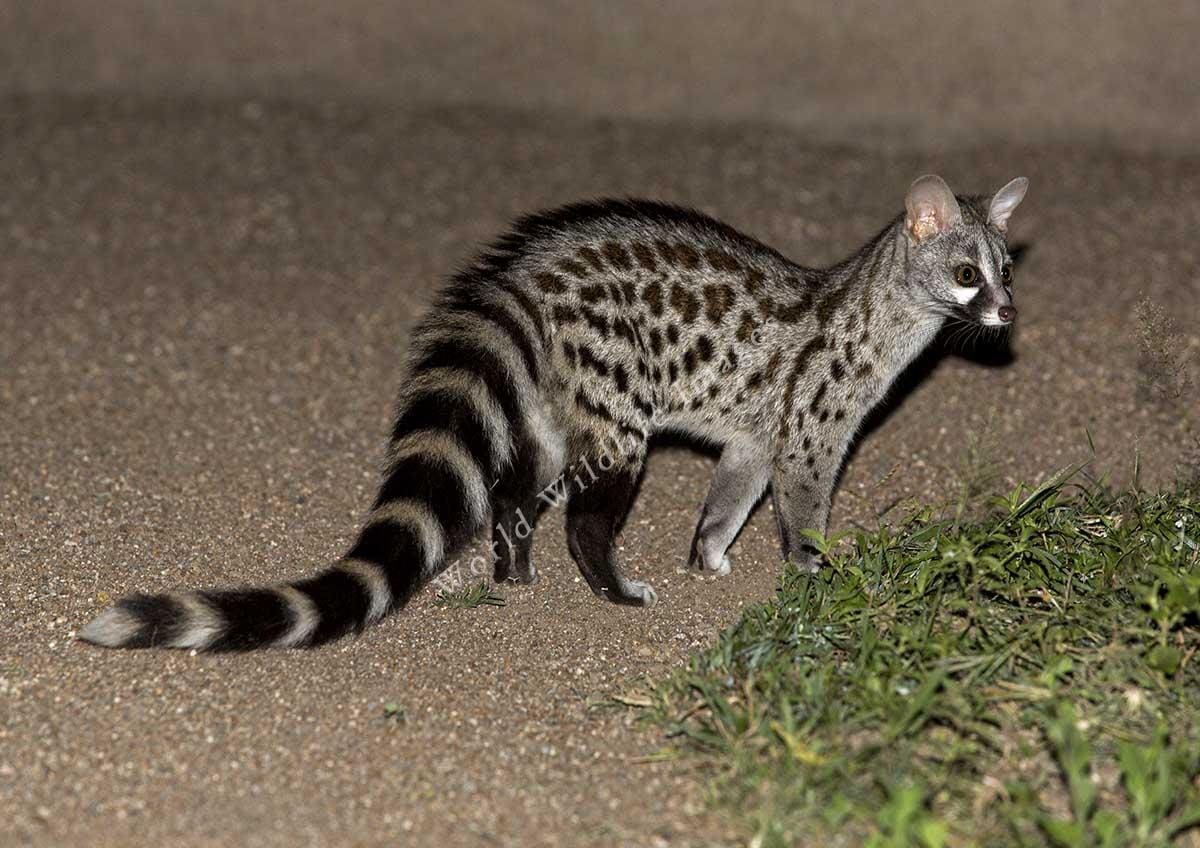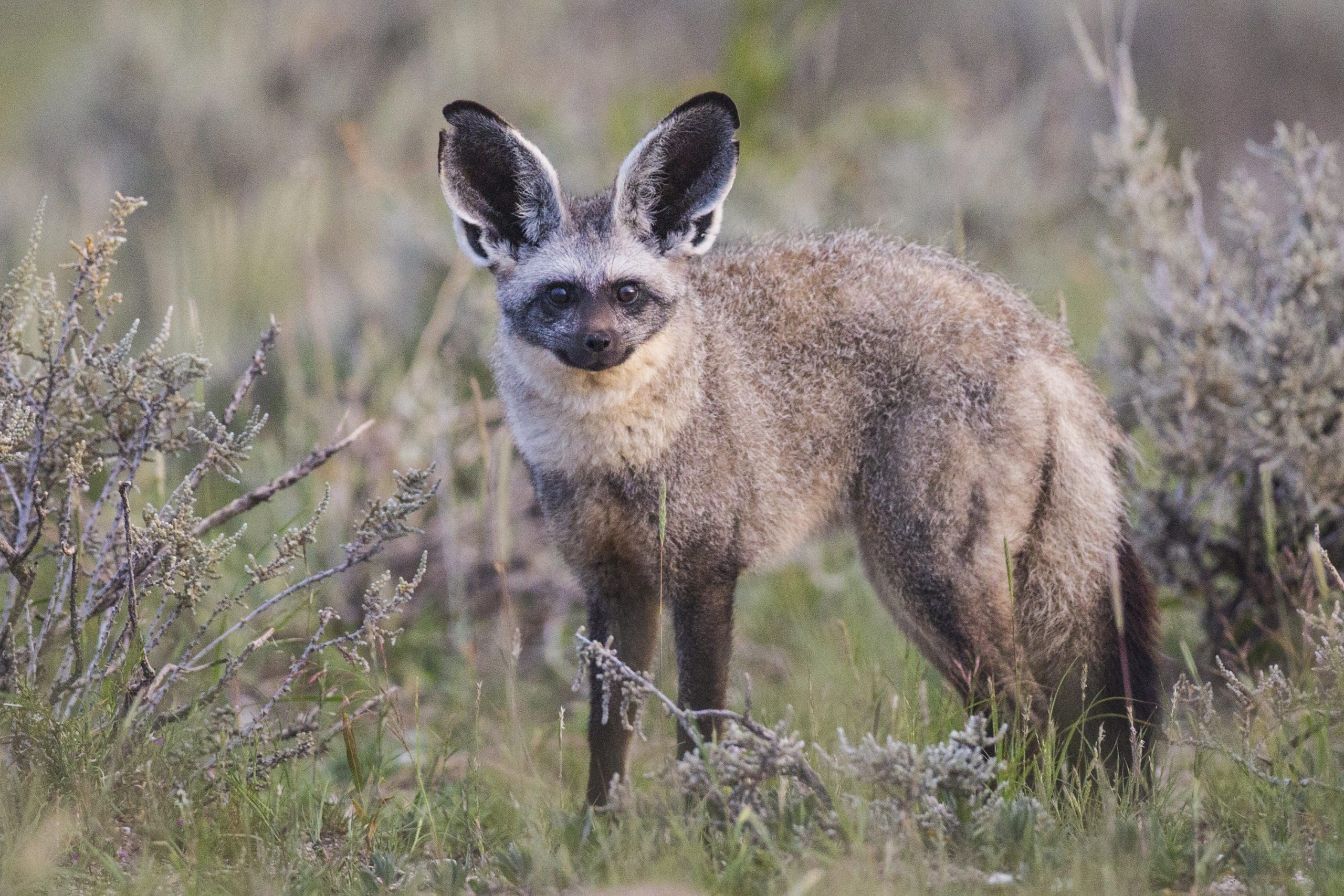[social_warfare]
Witnessing the wilderness under the cover of night is a completely unique experience. Going on a night time safari in Africa allows you the opportunity to see a whole new cast of nocturnal animals who come out to roam the bush at night after being tucked away all day, some of which are some of the continent’s rarest and most elusive animals.
While the most sought after nighttime sightings would usually be the predators who like to hunt under the cover of darkness like lions and leopards, in this article we look at some of the lesser known nocturnal animals commonly found throughout Southern and East Africa.
11 Nocturnal Animals To Look Out For On Night Safari In Africa:
Bushbaby
There are several species of bushbaby found across Africa, and all of them are nocturnal. Petite and agile, these adorable primates are perfectly adapted to life under pitch-black skies, with large ears and oversized eyes that glow bright red against the blackness of the night.
The name bushbaby comes from their eerie call, which sounds like the cry of a baby ringing out through the bush.
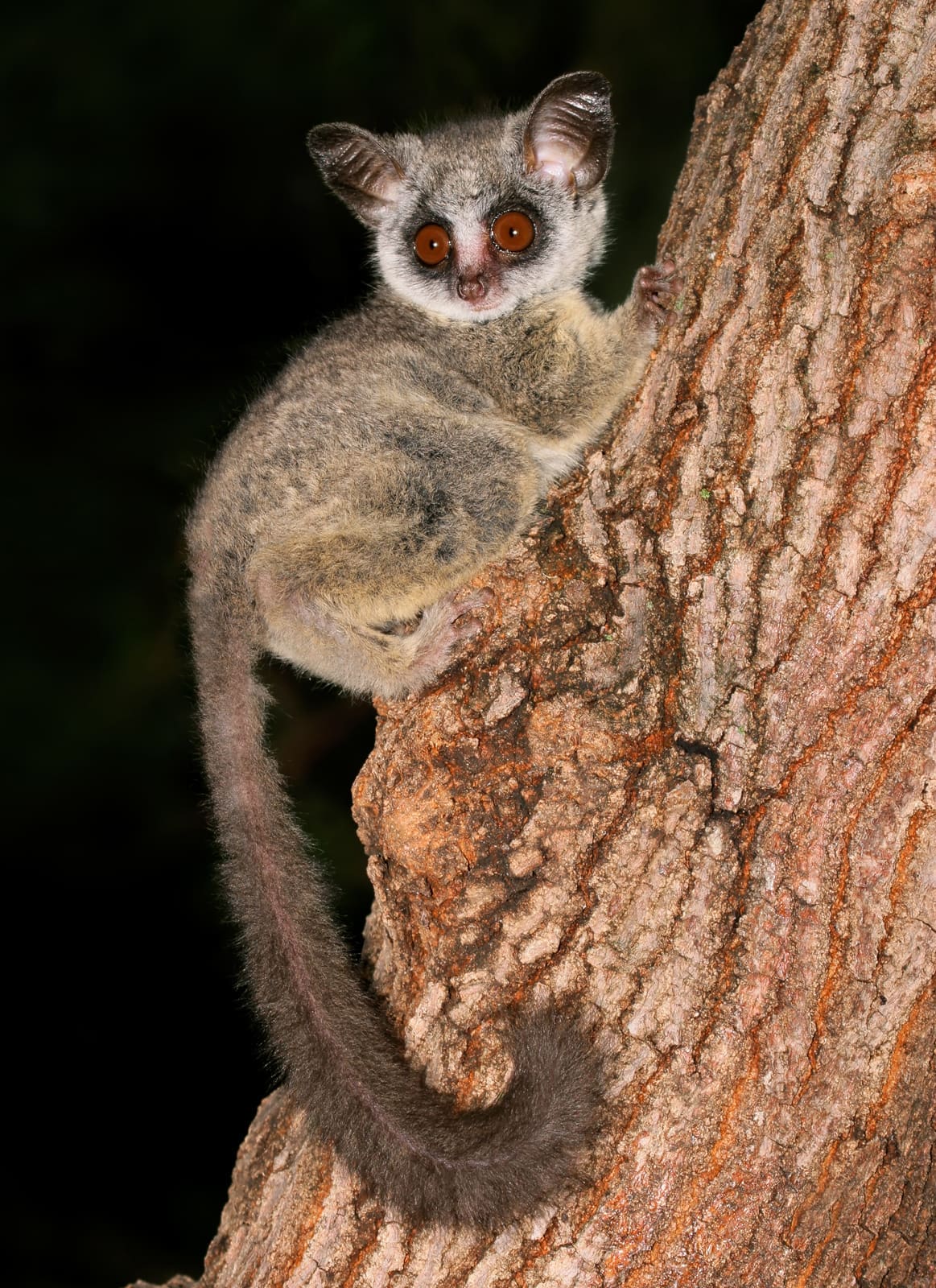
Feeding primarily on insects and fruit, bushbabies often become habituated around humans, and can readily be spotted scavenging at bush lodges or campsites.
Their long, bushy tails help balance them as they move through the trees, and provide power when jumping from one branch to another. Bushbabies can jump more than 2 metres (7 ft).
Honeybadger
One of the only animals on this list that is not strictly nocturnal, the African Honeybadger can, in some areas, be seen active during the daytime.
They are solitary animals, living in self-dug holes and feeding on a varied diet made up of honey, birds, rodents and snakes.

They have a long, stocky body with a small, flat head. Their fur is course and jet black, with the exception of a broad white stripe that runs from the top of their head to the base of their tail.
Honeybadgers are known as oneof the most fearless animals in Africa and will readily attack whole prides of lion, leopards and venomous snakes. They are well equipped to do so with incredible strength and ferocity matched by no other species, as well as sharp teeth and extra thick skin around their necks.
Fennec Fox
If you’re planning a nighttime safari in the Sahara Desert, you’ll have the chance to see the fennec fox. Found across North Africa and in parts of the Middle East, its name was derived from the Berber word ‘fanak’ which means fox.
Fennec foxes are the smallest member of the canid family, growing to an average 20 centimetres in height. Their most distinguishable feature is their enormous ears, which allow them to hear potential prey as it moves underground.
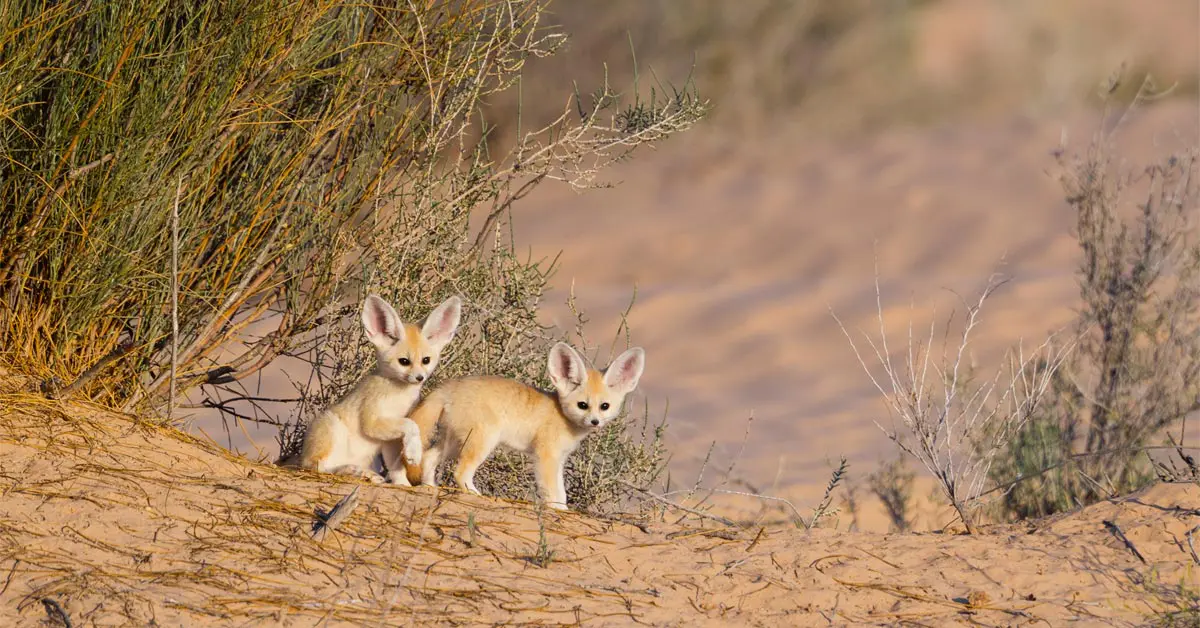
They are extremely well-adapted to life in the harsh desert climate, with fur-covered soles that protect it from the scorching hot sand and a cream-coloured coat that deflects the sun. Their large ears also help to dissipate body heat when temperatures soar.
Fennec Foxes mate for life, and live in close family units, in underground dens. They primarily feed on insects, reptiles and small mammals.
Pangolin
One of the most endangered mammals in Africa, a pangolin sighting is always greatly treasured while out on safari. There are four species of African pangolin, with the ground pangolin being the only one found in Southern and East Africa.
Pangolin body parts are highly sought-after in Far Eastern countries like China and Vietnam, as a result they have become the most trafficked animal in the world. Often mistaken for reptiles, pangolins are covered in thick protective scales, and role into a tight ball when threatened.

Also known as the Cape or Temminck’s pangolin, the ground pangolin is brown or olive in color, and can reach up to 1 metre in length. They lead solitary lives and are specially adapted to dig for termites.
They are found in several Central, Southern, and East African countries including South Africa, Botswana, Zambia and Tanzania.
Aardvark
One of the stranger looking nocturnal animals in Africa, the aardvark almost appears as if it was created using spare parts from other animals.
Often mistaken for an anteater, the aardvark is greyish brown in colour with a humped body, a long snout and a thick tail. They can grow to a total length of nearly 2 metres.
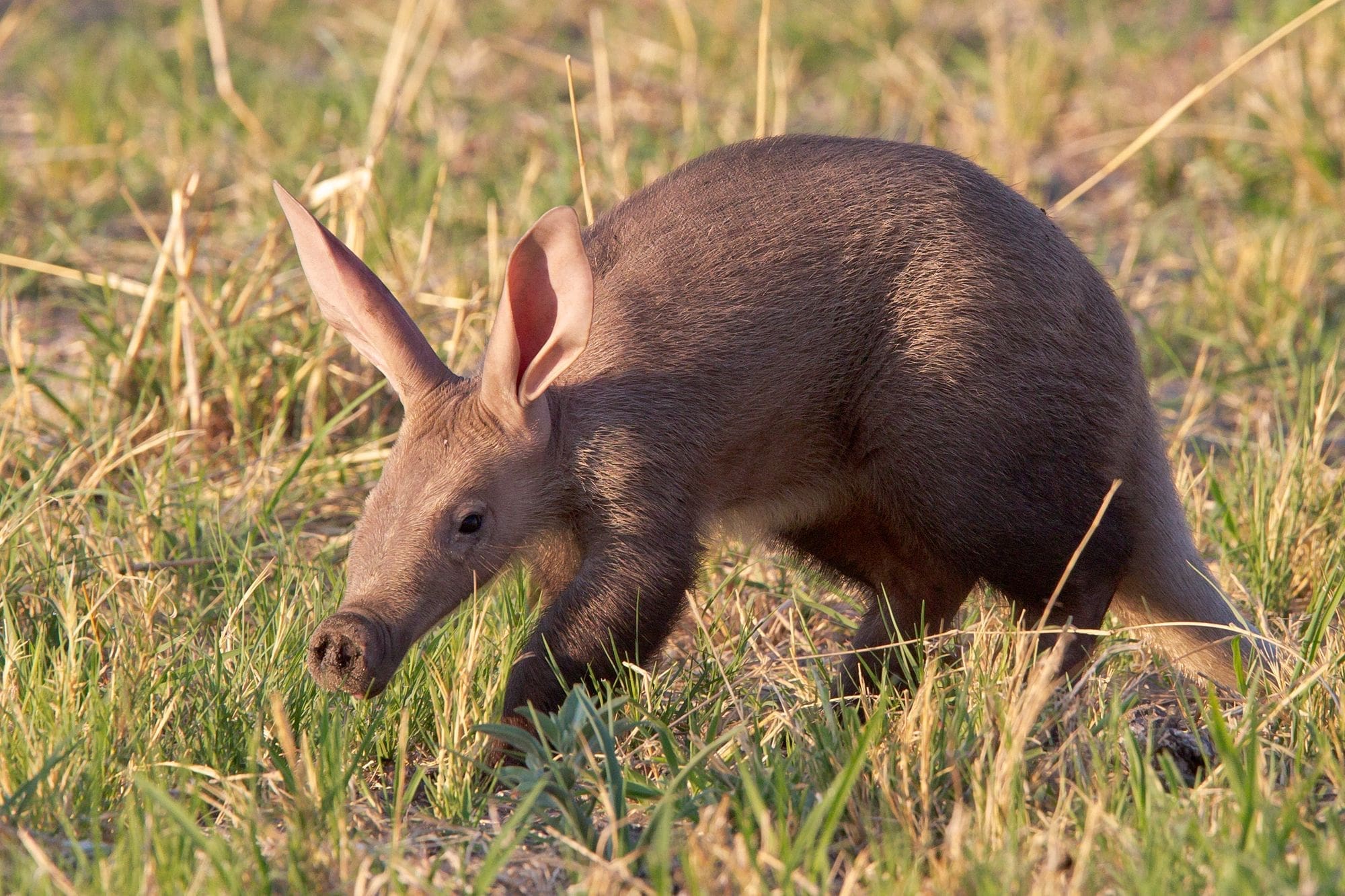
Found throughout Sub-Saharan Africa, Aardvarks spend the daytime hours sheltering from the sun in deep burrows. As night falls, they emerge and are straight on the hunt. They are expert diggers and detect their primary food source, termites, using both smell and hearing. Their powerful claws are used to dig into termite mounds, before the insects are lapped up with swift flicks of the aardvark’s long, sticky tongue. It is estimated that an aardvark can consume as many as 50,000 termites in a single night.
Cape Porcupine
Growing to a length of around 1 metre from snout to tail, the Cape Porcupine is the largest porcupine species in the world and the largest rodent in Southern Africa.
Their large, thick bodies are covered with black and white banded protective spines, the shortest of which are the sharpest.
The tail spines, or quills, are hollow and when threatened the porcupine rattles these as a warning to would-be predators. If the threatening sound isn’t enough to deter predators then a mouthful of sharp quills usually is. Both lions and leopards have been documented with permanent injuries caused by porcupines.
Found throughout central and southern Africa, porcupines are herbivores that primarily feed on fruit, roots and bark under the cover of darkness. They mate for life and dig an intricate series of burrows across a shared territory that can measure in excess of 150 square metres.
Small-Spotted Genet
The most common member of a family that could include up to 17 different species, the small-spotted genet is cat-like in appearance despite baring no relation to felines. Instead they classified as viverrids, a family they share with civets.
Small-spotted genets boast a slender body, pointed face and are pale, grey in colour with a black stripe down the length of their spine with several rows of small black spots. Their tails are striped with rings of black and white.
Genets are very adept hunters and skilled climbers, and are most active just after sunset and just before sunrise. Their diet is primarily made up of reptiles, birds and small mammals.
Small-spotted genets are found throughout Southern Africa, and in scattered regions across the rest of the continent.
Bat-Eared Fox
The bat-eared fox gets its name from their disproportionately large ears, which almost resemble a bat’s wings in full flights. These large ears allow the species to thrive in the extreme heat of the arid savannahs in which they live, as they help distribute heat around the body.
The African continent is home to 2 separate populations of bat-eared fox, one which occurs from Ethiopia to Tanzania and another that occurs from Angola to South Africa.
The southern population is only nocturnal during the summer months, when it uses the cover of night as a means of escaping the scorching daytime heat. In winter they are much easier to spot as they spend their days foraging.
They feed predominantly on termites, other insects, and small reptiles, and are often seen hunting in pairs or small groups.
South African Springhare
One of the most common nocturnal animals spotted on a nighttime safari in Africa, the South African springhare is a peculiar looking animal that strongly resembles a miniature kangaroo.
Despite their long tails, short front legs and extended hind legs, they aren’t related to kangaroos at all. And despite their name, they aren’t related to hares either. Instead they care classified as rodents.
Springhares are a yellow or reddish brown color, with a distinctive black tip on their bushy tails. They forage on grasses, seeds, and leaves and are most often seen sitting upright, transfixed in the beam of a safari vehicle’s headlights. Their powerful hind legs can propel them distances of more than 2 metres and their large eyes are well-adapted to darkness.
African Civet
The African civet is widely distributed across sub-Saharan Africa, but is very rarely seen. This is because it spends its days sleeping deep in the bush, only surfacing at night to hunt.
Civets are a solitary species, that stand around 40 centimetres at the shoulder. They are stocky mammals, with large hindquarters and a bushy tail. The maze of black spots and stripes that detail the civet’s grey coat are as unique as a human’s fingerprints – while the black band across its face gives it an almost racoon like appearance.
Civets are omnivorous and will eat everything from eggs to carrion and share another racoon-like trait. They mark their territory with a pungent liquid secreted from their perineal glands, which was historically harvested to make perfume.
Aardwolf
With its name directly translating to ‘earth wolf’ in Afrikaans (a southern African language, originating from Dutch), its not hard to notice the aardwolf’s wolf-like appearance.
However the aardwolf is not related to wolves or any other canine species, but instead belongs to the same family as the hyena.
Aardwolves are not easy to spot, but once they are, they are very easy to identify – with black stripes running vertically over its yellow fur and a thick mane that’s raised when threatened by predator or foe. As a secondary defence mechanism, their anal glands are also capable of excreting a foul-smelling liquid in hopes of deterring any would-be predators.
Aardwolves spend their days in underground burrows and emerge at night to prey almost exclusively on termites. They favor dry, open grassland and savannahs where termite nests are plentiful, and form lifelong mating pairs.


